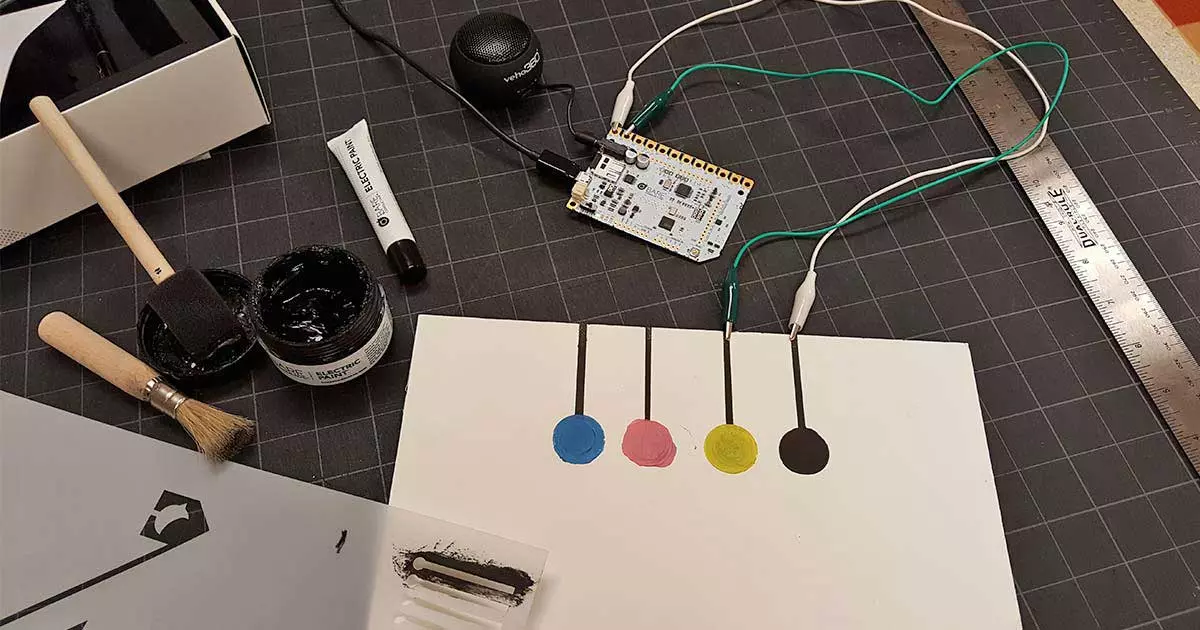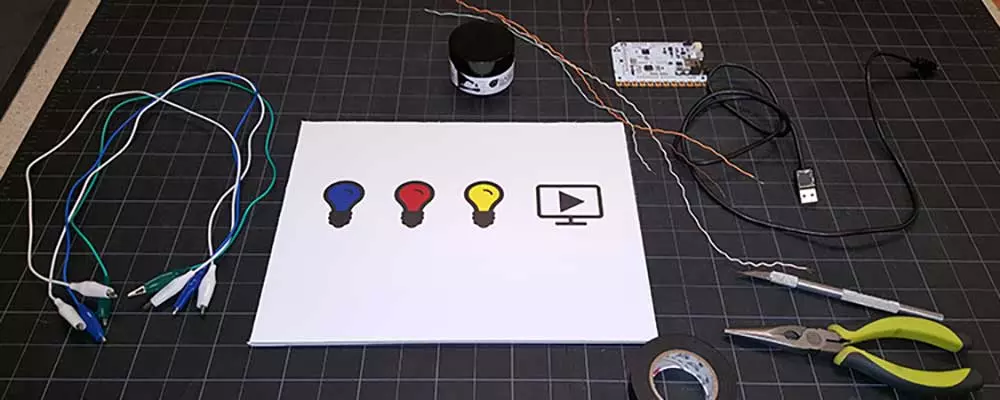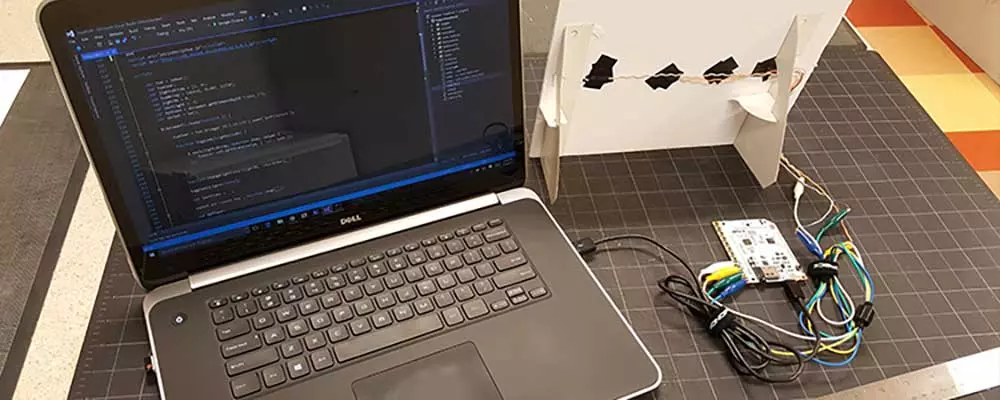We're Experimenting with Conductive Ink

Early testing with the conductive ink and supporting materials
When technologies like VR are used smartly, the results can be unforgettable. That comes as no surprise. For many audiences today, VR offers an entirely unfamiliar experience. But is there a way to turn the familiar into something memorable? We think so. Our latest experiment with conductive ink proves that by presenting the familiar in a new and bold way we can create experiences just as compelling—and perhaps just a little bit magical.
Conductive ink is a type of ink mixed with very fine particles of conductive material, usually a powdered metal. When applied to a surface, the ink forms pathways for electrical signals. These circuits are sensitive enough to capture the energy conveyed by the touch of a finger. Once these painted circuits are connected to a controller, like a basic Arduino board, you can program technologies to react whenever that surface is touched.
In other words, conductive ink turns just about any surface into a touch-enabled sensor.

Construction of the hardware elements of the experiment
Putting Conductive Ink to Paper
Andy Hunt, our executive creative director, digital, worked up a few experiments to demonstrate what’s possible with conductive ink. Different materials require different applications of the ink, but we’ve managed to get the ink functioning on a variety of papers and paper goods.

Connecting the hardware and software together
In our experience, we applied some black conductive ink to a foam core board, and then applied some additional artwork to cover the ink. We punctured wire leads through the back of the ink, functioning a lot like a printed circuit board. The leads connected to an Arduino board, which fed the touch inputs to a small web app running on a local web server.
We added some Philips Hue smart lighting components to the setup, too, using a network bridge to extend our display with a smart bulb and a connected light strip.
With everything connected, a user can simply touch the printed artwork to change the lighting or activate the video. The lights can be controlled independently or as a pair. For an additional bit of fun, we've also applied some conductive silver ink to the back of a business card to show that paper-on-paper interactions can also trigger a result – in this case, turning off the lights and playing a short video.
The seemingly ‘simple’ technology of conductive ink has a surprising payoff when experienced in person. While VR displays are memorable because they’re new, conductive ink displays are memorable because they’re unexpected. After all, nobody expects an interactive experience when they touch a printed display. But when you augment these ‘ordinary’ materials with the interactive superpowers of conductive ink, your audience can experience something truly unforgettable.
If you’d like to explore this further, please contact us.

